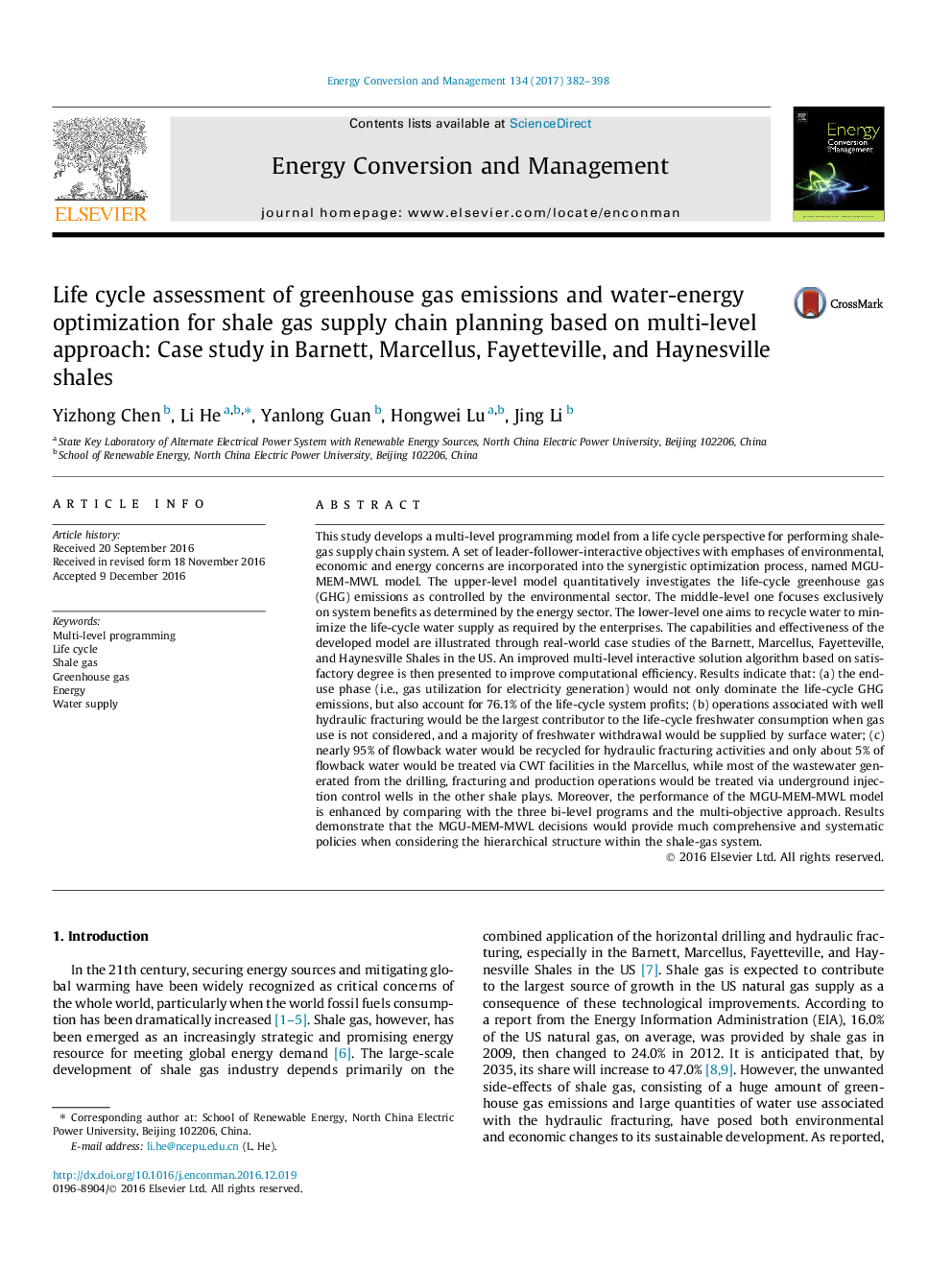| کد مقاله | کد نشریه | سال انتشار | مقاله انگلیسی | نسخه تمام متن |
|---|---|---|---|---|
| 5013052 | 1462828 | 2017 | 17 صفحه PDF | دانلود رایگان |
عنوان انگلیسی مقاله ISI
Life cycle assessment of greenhouse gas emissions and water-energy optimization for shale gas supply chain planning based on multi-level approach: Case study in Barnett, Marcellus, Fayetteville, and Haynesville shales
ترجمه فارسی عنوان
ارزیابی چرخه زندگی انتشار گازهای گلخانه ای و بهینه سازی انرژی آب برای برنامه ریزی زنجیره تامین گاز شیلنگ بر اساس رویکرد چند سطحی: مطالعه موردی در برنت، مارسلوس، فایتلویل و شیل های هینسوییل
دانلود مقاله + سفارش ترجمه
دانلود مقاله ISI انگلیسی
رایگان برای ایرانیان
کلمات کلیدی
برنامه نویسی چند سطحی چرخه زندگی، گاز شیل، گاز گلخانه ای، انرژی، تامین آب،
موضوعات مرتبط
مهندسی و علوم پایه
مهندسی انرژی
انرژی (عمومی)
چکیده انگلیسی
This study develops a multi-level programming model from a life cycle perspective for performing shale-gas supply chain system. A set of leader-follower-interactive objectives with emphases of environmental, economic and energy concerns are incorporated into the synergistic optimization process, named MGU-MEM-MWL model. The upper-level model quantitatively investigates the life-cycle greenhouse gas (GHG) emissions as controlled by the environmental sector. The middle-level one focuses exclusively on system benefits as determined by the energy sector. The lower-level one aims to recycle water to minimize the life-cycle water supply as required by the enterprises. The capabilities and effectiveness of the developed model are illustrated through real-world case studies of the Barnett, Marcellus, Fayetteville, and Haynesville Shales in the US. An improved multi-level interactive solution algorithm based on satisfactory degree is then presented to improve computational efficiency. Results indicate that: (a) the end-use phase (i.e., gas utilization for electricity generation) would not only dominate the life-cycle GHG emissions, but also account for 76.1% of the life-cycle system profits; (b) operations associated with well hydraulic fracturing would be the largest contributor to the life-cycle freshwater consumption when gas use is not considered, and a majority of freshwater withdrawal would be supplied by surface water; (c) nearly 95% of flowback water would be recycled for hydraulic fracturing activities and only about 5% of flowback water would be treated via CWT facilities in the Marcellus, while most of the wastewater generated from the drilling, fracturing and production operations would be treated via underground injection control wells in the other shale plays. Moreover, the performance of the MGU-MEM-MWL model is enhanced by comparing with the three bi-level programs and the multi-objective approach. Results demonstrate that the MGU-MEM-MWL decisions would provide much comprehensive and systematic policies when considering the hierarchical structure within the shale-gas system.
ناشر
Database: Elsevier - ScienceDirect (ساینس دایرکت)
Journal: Energy Conversion and Management - Volume 134, 15 February 2017, Pages 382-398
Journal: Energy Conversion and Management - Volume 134, 15 February 2017, Pages 382-398
نویسندگان
Yizhong Chen, Li He, Yanlong Guan, Hongwei Lu, Jing Li,
